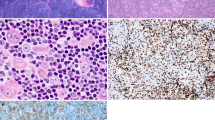Summary
Patients with Hodgkin’s disease, treated at most major medical centers, enjoy a cure rate on the average of approximately 75 percent. An additional 5 or 10% will not die of Hodgkin’s disease, because of the success of secondary treatments or because their deaths result from other related or unrelated causes. There are subgroups of patients who fare better or worse than this average, depending on prognostic factors such as age, stage, bulk, or site of disease and on the primary management program.
Substantial improvements in these curability and survival statistics will be difficult to achieve and demonstrate. The major efforts of clinical investigators of Hodgkin’s disease in 1990 are to identify and reduce the serious longterm morbidities of treatment programs and to assure that the excellent outcome results achieved at major centers can be accomplished more widely throughout the world.
The emerging challenge for investigators of Hodgkin’s disease in the next decade is not only to refine treatment methods but to gain a better understanding of the nature, etiology, and pathogenesis of the disease.
There are very important data and observations that suggest that Hodgkin’s disease is not a single disease entity, based on epidemiologic, histologic, and immunologic characteristics. Despite the heterogeneity of the disease, familial clustering and HLA correlations give strong evidence that there is a genetic basis for at least a component of the pathogenesis.
The new tools and concepts of the molecular geneticist combined with the recognition of more homogeneous disease subgroups give great promise that the genetic basis of Hodgkin’s disease will soon be understood.
Then, as with other diseases identified as genetic in origin, the challenge will be to know whether a single gene or multiple genes are involved, what the role of environmental factors may be, which gene products (or the absence of which products) are responsible for the disease, and finally, how to prevent or reverse the disorder on a rational, rather than empiric, basis.
Studies reported herein were supported in part by grant CA-34233 from the National Cancer Institute, Bethesda, MD, USA.
Access this chapter
Tax calculation will be finalised at checkout
Purchases are for personal use only
Similar content being viewed by others
Author information
Authors and Affiliations
Editor information
Editors and Affiliations
Rights and permissions
Copyright information
© 1991 Springer Science+Business Media Dordrecht
About this chapter
Cite this chapter
Rosenberg, S.A. (1991). The continuing challenge of Hodgkin’s disease. In: Ultmann, J.E., Samuels, B.L. (eds) Annals of Oncology. Springer, Boston, MA. https://doi.org/10.1007/978-1-4899-7305-4_4
Download citation
DOI: https://doi.org/10.1007/978-1-4899-7305-4_4
Publisher Name: Springer, Boston, MA
Print ISBN: 978-1-4899-7294-1
Online ISBN: 978-1-4899-7305-4
eBook Packages: Springer Book Archive




